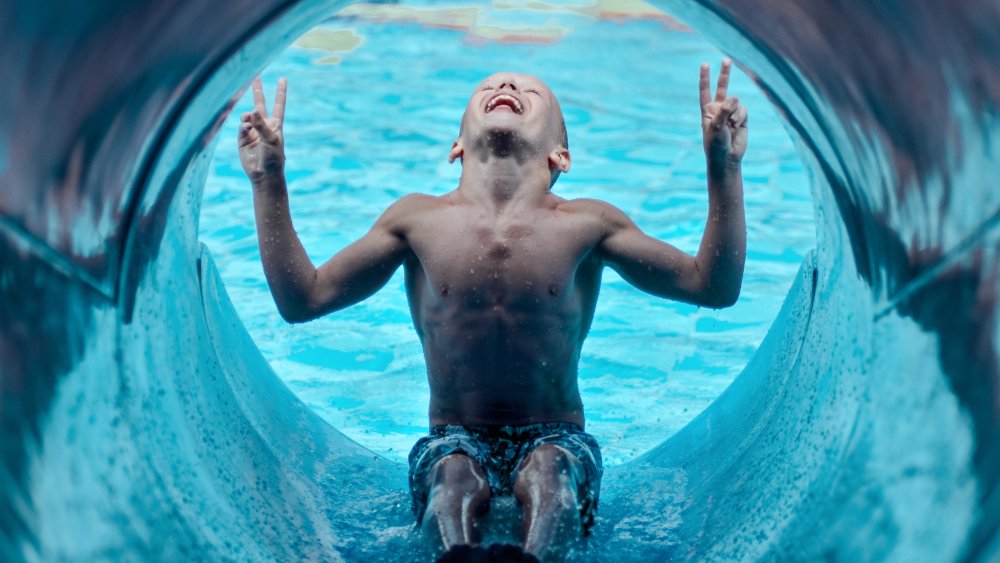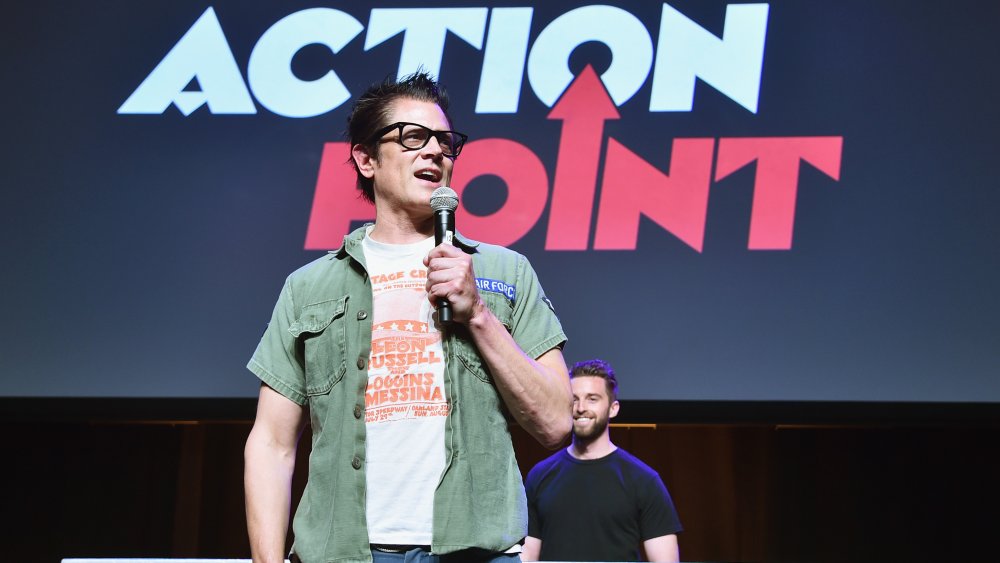The Horrifying Reason Action Park Painted A Pool Floor White
Four concussions, a broken hand, a busted meniscus, some whiplash, stitches over his right eye, and a few lost teeth. "Yeah," Johnny Knoxville told Vanity Fair, "on Action Point, I was injured more than any film than I have ever done." Many teens in the Tri-State Area suffered injuries similar to Knoxville's, as Action Point, Knoxville's 2018 comedy, was based on the infamously dangerous water park, Action Park, in Vernon, New Jersey.
Action Park embodied the laissez faire attitude toward health and safety that defined childhood memories from the 1970s and '80s. Weird New Jersey interviewed various people who had experienced Action Park's rides. One of them, the "Amazingly-not-wheelchair-bound Tom Fergus," put into words the ethos that informed the park's shrugged response to danger: "All the wounds and injuries are true, including the idiot who jumped off the diving cliff into the 40-foot deep whatever-they-ended-up-calling-it pool — and he could not swim. After that, they painted the pool white so they could see bodies lying on the bottom." That's it for why specifically they painted the bottom of the pool white. Prior to this, one of the park's six known fatalities had drowned because the lifeguards couldn't tell that there was a person drowning. So they painted it white.
Other stories include ubiquitous first aid carts transporting kids with head wounds, rides that seemed designed to hurt the park's visitors, and a janitor who swept around a man who was suffering a seizure.
Class action park
Even without all of the added testimony, you know that if Knoxville calls something injurious, it injures. The stunt that really did him in was Action Park's Alpine Slide. The History Channel describes the ride as "a long, cement-and-fiberglass-filled track that visitors rode down in a wheeled device." The extreme nature of this ride quickly grows apparent: The riders would take a ski lift to the summit, where they would find a series of photographs detailing all the possible injuries awaiting them. In theory, each rider controlled their own speed, but the devices were almost always broken. Some had no brakes, which meant there was no slowing down as they zoomed down the concrete slide. Others had the brakes locked on, causing the rider to crawl down the slide, inevitably being hit in the back by another, speedier, rider. Unsurprisingly, the Alpine Slide was the first ride to kill someone — an employee who flew off the track and hit his head.
Knoxville experienced a similar incident. Recollecting the stunt to Sports Illustrated, Knoxville remembers having an ambulance at hand while hurtling down 2,700 feet. "I flew off the track, about 20 feet in the air, maybe six feet above the ground, and landed face-first. Severe concussion. Right to the hospital." The park closed in 1996, but on August 27, reports the Philly Voice, HBO Max released a new documentary about the insanity of Action Park, allowing even more stories to surface.

